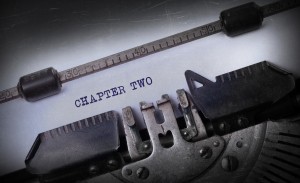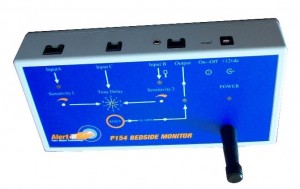
In the first chapter on the History of Alert-it we took you from humble beginnings in 1994, with the invention of our first bed movement alarm through to the starting blocks of Alert-iT as we know it today, with a sophisticated failsafe radio based bed movement monitoring system.
In this chapter we’d like to highlight our continuing story and efforts to provide systems which encourage independence and less stress caring.
Alert-iT and The Muir Maxwell Trust
Our continued effort to supply effective and affordable monitors was amply rewarded in 2003 when one of our alarms was reported to have saved the life of a young boy in Scotland. In what is now a common tale, his seizures were under control with his drug regime, but contrary to medical opinion his parents had the foresight to fit one of our monitors to his bed.
It is important to note that people, especially young children, change. And often due to stress, hormones and lifestyle changes, trigger sensitivity alters too. The young boy suffered what was considered a potentially health damaging seizure but thanks to the alarm and quick intervention he was safe.
His parents later went on to establish a formidable charity; The Muir Maxwell Trust, to aid in the research of and to support those who have epilepsy. Part of the support was to supply our monitors free of charge to those unable to afford them. We were of course delighted for the recipients, but it also gave our fledging company some security in the years that followed, allowing us to develop new products.
Fuel for Creativity
Once you have a product you soon hear of the things it cannot do or does not do well. This is the feedstock of the imagination for the engineers in our team; our reseller was also inventive in embracing other technologies to add protection for the users. Therefore we soon learned that Tonic/Clonic, whilst the most prevalent and serious presentation, did not account for all dangers.
So, by 2000 our bed movement systems were supplemented with imported incontinence detectors to cover not only urine release but excessive salivation and vomiting. They also had the ability to detect breathing based on a baby monitor being supplied to the NHS. At this point we had also added a microphone to detect excessive sound.
However, because the first user of this monitor was a little boy who made very small clicking sounds the microphone had a very special frequency response making it sensitive to low volume clicks, even with normal room sounds, such as radio & TV, present.
Our reseller had previously invented a Bed Occupancy sensor based on a spring loaded wedge under a leg which was used to send an alarm when the user was out of bed and hence vulnerable to an undetected seizure. We were also no longer only supplying mums & dads, but care homes too. This meant there was a line of pagers on the carer’s desk, as each monitor had its own unique pager. We even coupled the pager to a burglar alarm telephone dialler to pass voice messages to a neighborhood carer for those living alone but at risk.
Incorporating a Wealth of Features
In 2006 it was obvious that there was a need for a major redesign to incorporate all of these features. So, David left the safe harbour of employment and set sail in a bid to satisfy the current demand by designing our two mainstay monitors; the Companion and the Guardian.
The Companion was designed to incorporate the microphone and enuresis detection that had become so popular. We have also continued the association with the sensor supplier who modified his range of cotton based wetness detectors to suit our need. We were then able to offer sensitive bed and pillow sensors too.
The Guardian was a joint venture with the Medical Device company that supplied the breathing monitor. They incorporated all the seizure protection methods combined in the Companion along with their patented sensor for the shallow movements that indicate, by their absence, that a SUDEP situation may have occurred.
The final piece in our jigsaw was to develop a pager that was able to deal with up to 32 monitors in order to give the professional customers a suitable annunciator. This used exactly the same unique failsafe radio system but added a screen that could be programmed with the name of the user whose alarm has been activated.
You can find more information regarding these monitors in our latest brochure.
Turning Our Hands to Marketing
Once the new range of monitors was established it left time and energy to think about how to spread the word about what we could now do; in other words, marketing.
Our name was spreading and we were invited to tender for the supply of Epilepsy Support monitors to a wonderful group called Independence Homes. Melanie McCloud and her husband had set up the company to give those with severe epilepsy a chance to live independently as best they could. A key element therefore was to have an alarm system that meant they did not have to have invasive surveillance.
The Guardian was chosen as it covered all aspects of seizure presentation with connections to a Nurse Call system applied by Medicare; but they needed a fall detector for daytime use. Therefore we designed a special small version of our fall detector linked by radio to the Guardian monitor so that both could trigger the same apartment based alarm point. The fall alarm is especially effective for epilepsy as unlike those for the elderly it copes with sliding falls, repeated movement, and it pre-warns the user of an alarm and is simply reset by standing up.
Our relationship with Independence Homes has been a source of inspiration for improving the monitors thanks to the application for such a diverse range of needs within one organisation.
Company Changes
It is now 2009 in our story and we have reached young adulthood as a company. We left home and rented a small factory unit where we still reside. David, our founder, had the pleasure of seeing a small dedicated team beginning to form, with Joe adding to our engineering capability.
At the same time we embraced the name Alert-iT which represented the focus of the company better than our registered name of iTs Designs. Also on board from the beginning was Joy, a longer term colleague who was trained in electronic assembly to space quality and still keeps the products ship-shape today.
Further Help and Support
Make sure you keep an eye out for the next chapter in our story as we take you into Plesiocare and the journey to supporting those with non-epilepsy based needs.
For additional help, advice and support regarding assistive technology or specific requirements for you please don’t hesitate to get in contact with the team on 01530 239 900

